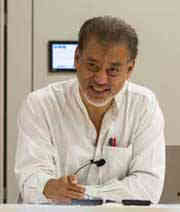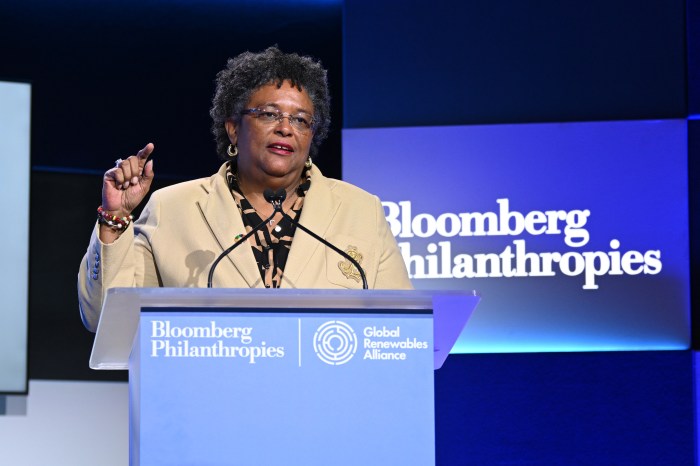KUALA LUMPUR and PENANG, Feb. 4, 2020 (IPS) – Financialization has worsened inequality through various channels, including macroeconomic policies. For example, quantitative easing and low, if not negative interest rates have fuelled credit and asset price bubbles, while fiscal spending cuts have adversely affected those depending on government assistance.
Unequal gains
Inequalities have increased due to financialization. The rich benefit from more rentier options and government efforts to protect the value of financial assets. The main gains of financialization tend to go to those who most successfully speculate at low cost, and to the asset management and investment firms involved.
Financial globalization has been accompanied by increased income inequality and broad stagnation in real incomes of wage earners in OECD countries. These developments starkly contrast with the 1990s’ promises of ‘citizens as investors’ and agents for ‘democratizing finance’.
Financialization in high-income countries has transformed everyday life with more and more financial products (home mortgages, private health insurance, pensions, stocks, and other securities) needed to deal with future uncertainties no longer mitigated by the welfare state.
Financial globalization affects lives and livelihoods in developing countries somewhat differently. Financialization is less pronounced in the South than in the North as fewer people have access to the formal financial system. Middle class families seek asset-based welfare — via mortgage housing, insurance and pension funds — while financial inclusion may reach others.
Financialization enriches
As yields on long term securities plunge and asset prices surge, very low interest rates encourage companies, private equity, hedge funds and the rich to borrow even more to invest in financial assets, sending prices even higher.
Finance also increases inequality through greater wealth concentration thanks to exclusive wealth management services for rich clients who get favoured access to specialized services and structured, high yield products.
Corporations and wealthy individuals use the best available professional services for tax avoidance and evasion, often facilitated by banking secrecy.
Private banking employs top fund managers to manage the wealth of rich clients, offering double digit returns while ordinary depositors have to accept modest interest rates on their deposits.
Rising debt and equity transactions have generated lucrative fees for bankers, traders, fund managers and private equity investors, mainly benefiting market players with means.
With finance capturing more profits than manufacturing, unlike before, those working for finance now secure much higher incomes compared to others. ‘Excessive’ financial sector salaries took off in the 1980s, reaching 40% just prior to the 2008 Global Financial Crisis, with ‘rents’ accounting for 30-50 percent of this ‘excess’.
The protracted decline of real wages in the US and the UK has been enabled by new rules and laws favouring wealth owners over labour incomes. In the US, capital gains can be taxed a maximum of 20 percent, while the highest marginal tax rate for wages is 37 percent.
Financial inclusion
By contrast, the poor have less, but also costlier access to finance, and contribute more to financial gains for others, e.g., through subprime mortgages, or unsecured personal loans.
Stagnant or declining wages have imposed greater indebtedness on the poor, with finance reaping lucrative profits from such lending to households. Between 1960 and 2007, US household debt rose from 41 percent to 100 percent of annual GDP.
But the celebratory discourse of ‘financial inclusion’ presumes that everyone successfully manages their involvement in increasingly complex financial markets, and that light regulatory touches and ‘financial literacy’ effectively deter predatory financial practices.
With real wages for many not rising for decades, increased financial inclusion has meant greater indebtedness for many of them.
Some national financial authorities have tried to make financialization more inclusive through initiatives to reach the ‘unbanked’, e.g., via micro-finance schemes and ‘agent banking’, with technological innovation and FinTech showing potential in this regard.
Such technological innovations in finance have had mixed distributional consequences. Higher computing capacity has enabled financial innovations that enrich investors, with economies of scale, at the expense of the less tech savvy and less well informed. But innovations can also serve those with less means.
Vicious cycle
If inequality contributed to the 2008 Global Financial Crisis, ‘unconventional’ monetary policy responses to the crisis, especially quantitative easing (QE), have also exacerbated inequality as QE works by raising financial asset prices.
With the earliest hints of recovery after 2008 and the bailouts, the ‘masters of the universe’ who had been pleading for them, claiming they were ‘too big to fail’, changed their tune, condemning fiscal efforts as irresponsible.
Financial crises thus offer opportunities for those with power and influence to secure reforms to their advantage. This also happened following the 1997-1998 Asian financial crises, after a decade of financial liberalization following military rule in South Korea.
The International Monetary Fund (IMF) provided emergency credit, requiring major structural changes, including greater ‘labour market flexibility’, reducing workers’ bargaining power and reversing the rising wage shares and low inequality of growth before 1998.


























